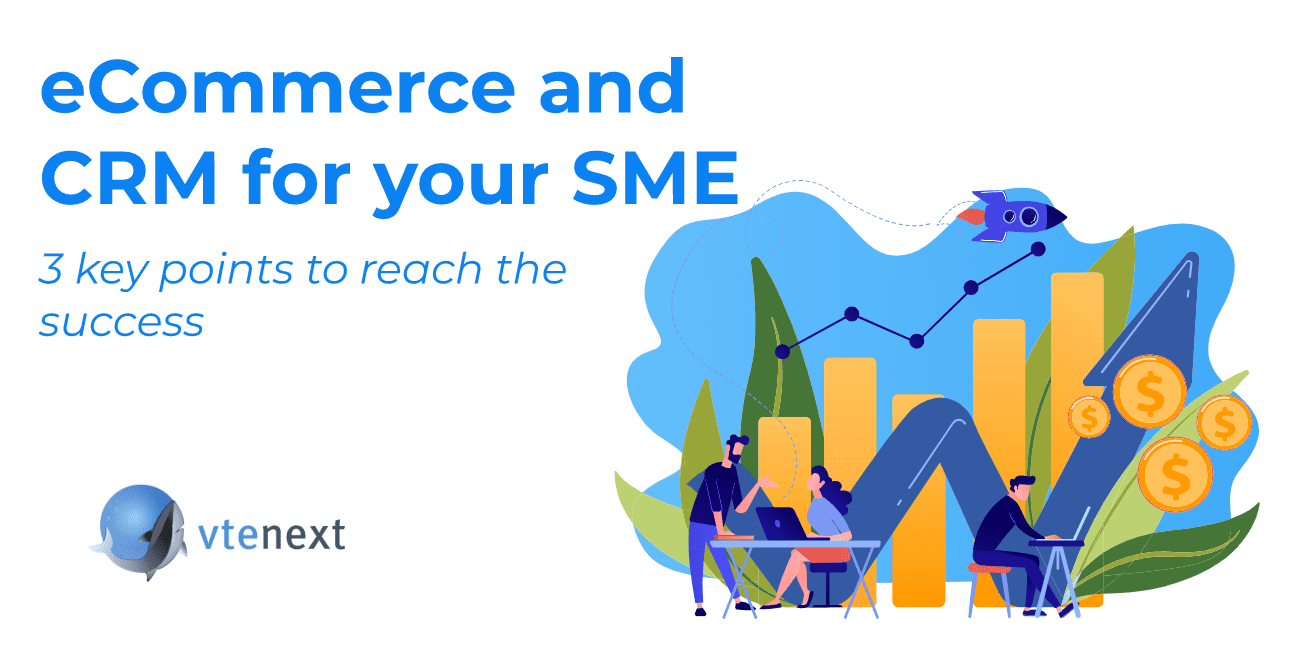Never as in this last year and a half so many SMEs switched from offline to online sale. It has been a true lifeline in a very difficult moment, that has made them recover a little bit, but it has been lived, by many of them, only as an answer to an emergency.
A lot of SMEs suffer because of a lack of strategic competences and tactics about how using in the most effective way digital tools in their businesses, preferring more “reactive” approaches, as an answer to a problem, exactly as during the lockdown.
According to the Shopping Index, the Salesforce’s quarterly report, during the second quarter of 2021, the global digital commerce grew by 3%, if compared to the same quarter of 2020, confirming a steady development rate, matched with the exponential rates of the first pandemic phase.
Even if the online orders amount is decreasing, due to the physical store reopening effect (-5%), the global online traffic is constantly increasing, recording an annual +8%. In the meanwhile, online shopping in Italy recorded a +15% of online traffic, nearly doubling the global growth rate. (Salesforce, July 2021)
The challenge that companies and brands, both small and large ones, are going to face, is the customers’ fidelization, today used to live in a nearly totally digitalized world.
For SMEs it’s not only about rethinking the buying experience, but also implementing correct strategies and technologies, to face the challenges coming in the next months.
In this post-pandemic world, in fact, the online presence of the SMEs which want to maximize their success, keeping up with the competitors, is fundamental.
Being present online means being able to manage the digital relationship with customers, customizing the communications and giving a perfect assistance service, the same as big brands do.
For this reason, in this article we are helping you to explore strategies and tools that can make your company’s eCommerce more profitable.
eCommerce for SMEs: how to improve your online presence quality, making it more profitable
How much time and how many resources did you invest, or are you thinking of investing, to increase the online traffic on your website?
Are you investing the same amount of time and resources to maximize the conversions from customers who are actually browsing your website?
The rule is quite obvious: more customers means more turnover, which means more profit.
Applying it is certainly more difficult: let’s see how!

John Lawson, CEO at ColderICE Media, identified 3 levels to optimize your eCommerce profit:
1- Customer optimization
This is the level on which most of the companies place their focus, also because without customers your eCommerce wouldn’t make any sense.
Strategies to increase the amount of lead landing on your website are multiple:
- Social Media Marketing on the main social medias
- Adding content, photos, videos and reviews
- Optimizing your eCommerce content for SEO purposes, to make easier for your potential customers to find you
- Make the buying process more user friendly: improving the checkout process or giving a free shipping are only some examples
- Improving the customer experience and providing a perfect customer service
2- Revenue optimization
Optimizing the turnover doesn’t mean only gaining customers, but also increasing the buying frequency and the average order.
Which strategies can you implement?
- Increasing repeat sales: your customers need to feel cuddled and stimulated to buy again on your eCommerce. It always costs less to serve an old customer than a new one. Use tools to encourage old customers to buy again from your shop, such as specific discounts or loyalty prizes
- Up-selling: convince your customers to add other products to their shopping bag (you could offer, for example, the free shipping to orders with two or more items)
- Cross-selling: promote products which complete an order (for example, if a customer bought a vacuum cleaner, it make sense trying to sell him some filters)
eCommerce isn’t the cherry on the cake, it’s the new cake
Jean Paul Ago
CEO – L’Oreal
3- Profit optimization
Third level is the one that could have the highest impact on your business. Increasing the profit could mean an expenses lowering or a products’ price increasing, even if it usually is a mix of both the strategies.
After all, in a business revenue is not the only important value, it is more important how much you keep.
What to do?
- Streamlining your operational processes: do you exactly know how the processes that govern your activity work? Is there any bottleneck?
- Being supported by a consultant who can really help you to monitor your activities’ trend from an economic and financial point of view, and who can give you tips about the right strategy to undertake
- Cooperate with your suppliers: identifying coherent prices and shipping costs with your cost and revenue structure
- Invest in marketing activities to improve your brand’s perceived value: most of the people are more inclined to buy a known and trustworthy brand.
Why do you need a CRM for your SME’s eCommerce
Data provided by eCommerces are extremely precious for your business: customers’ personal data, insights about their behaviours and their buying preferences become a really important database that we must make the best of.
Each company might use a good CRM software to manage the complexity and to be able to maximize the success on the three levels.
Thanks to the CRM:
- You can create digital relationships with customers: store data, consumers’ behaviour, preferences and find the typical behaviours that bring customers to quit the website. Then take action immediately
- Customize your communication: send tailor-made promotions, messages or DEM, increasing their conversion rate and creating value for your actual and potential customers
- Build with your customers a trustful relationship providing them an excellent user experience: CRM is available for each user in the company, everytime. It gives you the chance to provide accurate and fast answers to your customers, giving them the solutions they are looking for
- Provide a dedicated page in which your customers will be able to send you their requests: through a ticketing system, your customers will be able to send and monitor their requests status, building a direct connection with the company
- Maximize the Customer Experience: from the first order, or contact, to the post-sale, managing everything through a single platform
- Monitor and digitalize each business process avoiding the bottlenecks
- Automate manual processes, such as newsletters and communications sending
vtenext is a in cloud CRM, which helps you to manage your eCommerce in a flexible way: monitor your sales trend, manage your marketing activities, plan assistance interventions or follow up activities from each kind of device, without the need of any installation and configuration.
